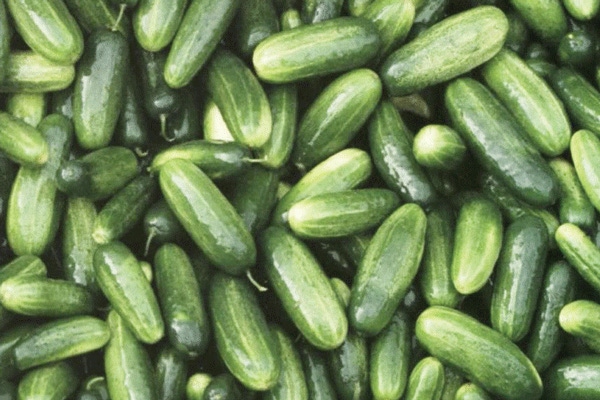March 15, 2011

For North Carolina cucumber growers, late was definitely better than early in 2010.
“Our spring cucumbers were heavily impacted by the heat when we had so many 100-degree days,” says grower Charles Harden of Windsor, N.C. “But the fall crop was a pretty good one.”
The early crop was hit very hard by the weather, says Allan Thornton,North Carolina Extension associate stationed in Clinton. “That was partly because it was dry, but the heat did as much harm as the drought.”
Considering the weather, it was probably a little better crop than you would expect, says Thornton. “But it wasn’t what you would call a good one. The second half was a lot better than the first.”
The late crop got adequate rain. In fact, it got too much rain at one point late in the season, but it still produced a decent yield, he says.
“There were many ‘crooks’ and ‘nubs’ in this crop, even where farmers irrigated,” he says.
Nearly all North Carolina vegetables suffered stress over the summer.
“A lot of cabbage suffered blistering, and in many cases peppers — which are all irrigated — did so too. The foliage just wasn’t able to stand up to the heat.”
The disease that is the bane of growers of cucumbers— cucurbit downy mildew— made very little appearance in the dry spring conditions.
But when it finally started raining later, the disease started showing up, proving once again that you always have to be prepared for this disease.
Harden says the chemicals available now will do a satisfactory job of control as long as you use them as a preventative.
“You have to switch them up and use them on a schedule,” he says.
Presidio and Ranman fungicides have had a major effect on downy mildew control on Harden’s farm, he says, along with Previcur Flex and Tanos.
You can stay ahead of cucurbit downy mildew by using a forecasting system that assists in the timing of fungicide applications for maximum benefit. It can be found at this website: www.ces.ncsu.edu/depts/pp/cucurbit.
And it is not just an aid in cucumber production. In Tennessee, where there are relatively few commercial plantings of cucumbers, cucurbit downy mildew is more of a problem on pumpkins and squash, says Steve Bost, Tennessee Extension plant pathologist.
But for any of these cucurbits, the key to control of downy mildew is recognition of symptoms.
“On pumpkins and squash, the first symptom may be tiny yellow lesions on the leaves that quickly turn necrotic,” says Bost.
“On cucumbers, cantaloupes and watermelon, the leaf lesions tend to be bigger, perhaps the size of a nickel.”
Yield loss can be substantial
Only the leaves are infected, but yield loss can be substantial.
The strains of downy mildew that American farmers have been experiencing in recent years have been so aggressive and destructive that a farmer can lose all his crop very quickly, says Bost.
For that reason, you have to find out quick if you have it.
“Many growers have lost the battle against downy mildew by waiting until they could clearly see the disease before initiating sprays,” says Gerald Holmes, North Carolina Extension plant pathologist.
“Early detection of downy mildew and immediate fungicide application is imperative.”
Diagnosis can be difficult, Bost says, so if you think you have downy mildew, but it hasn’t been reported yet, call your county agent immediately. The agent will be able to identify it or will know a university specialist who can.
“If downy mildew has already been reported in your area when you see lesions, you can assume you have it,” he says. “You should already be engaged in a routine spray program every seven to 10 days with a broad spectrum material like mancozeb or chlorothalonil.”
Then add a more specific chemical. “There are several, including Tanos, Presidio, Ranman, Previcur, Gavel and Curzate,” he says. “Choose two and alternate them to avoid disease resistance in the pathogen.”
Continue sprays on a five to seven day interval as long as conditions for the disease are favorable, meaning rain or high humidity.
Stay on your spray program until the weather changes. However, even occasional rain may require the use of a downy mildew product once every seven to 10 days.
There aren’t many cultural practices that will help with downy mildew, especially once it is established in the field. Rotation is no help because it doesn’t over-winter in the field. Destroying plant debris won’t help either.
It may help to avoid high plant populations and keep cucurbit fields away from tree borders to maximize air movement.
There are some cucurbit varieties resistant to downy mildew, and it may pay to choose one.
The trend in cucumber harvest in North Carolina to mechanization has continued, and Harden has been part of it. He harvests his cucumbers with a Raven pickle harvester that sorts out oversized cucumbers and puts them back on the field, destroying the crop as it goes over it.
The mechanization procedure is still fairly new in the Southeast but Harden says it works well for him. “The companies are satisfied with the production from mechanical harvest.”
About half the crop was hand harvested and half mechanically harvested in 2010, says Thornton.
You May Also Like




